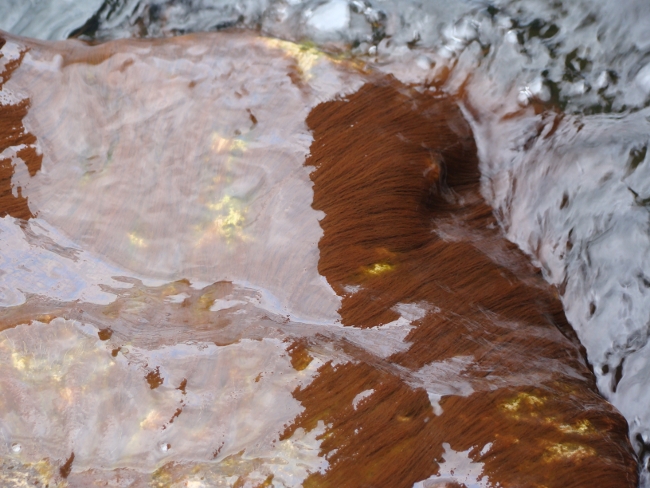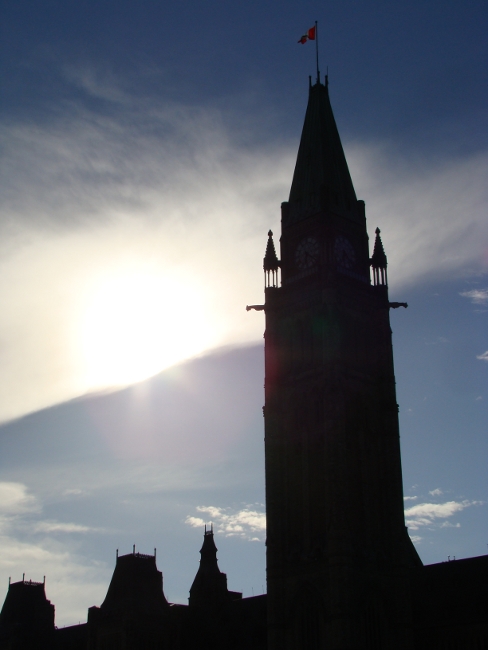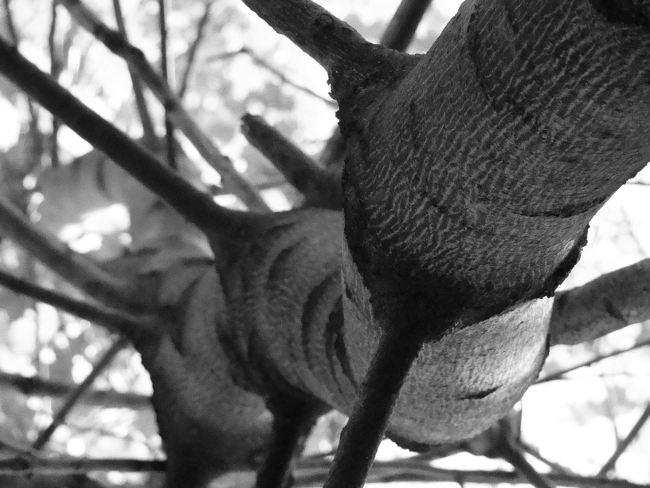I’ll be honest with you. When the protest began Saturday, just after 2:00 at Queen’s Park, I was hoping to see a little violence. Part of me was energetically charged by learning news of my rights being stripped, and I was aching to flex my civic powers a little. At the Second Cup at Bay and Bloor, it was agreed, among my group of friends, that we would try to get as far as we comfortably could to “The Wall” without getting arrested. My backpack, thanks to an article on protest-preparedness in Now Magazine, contained water, peanuts, an apple-cider soaked dishtowel (for tear gas) and a pair of earplugs (for the sound cannons). I was jittery. I was excited.
As soon as I saw the Black Bloc marchers, I was captivated. I forgot about the student and labour union demonstrators, the climate activists and the anti-war protesters. If there was a group that would push the boundaries that day, it looked to be this black-masked cabal of men and women who spent the first leg of the march blocking camera lenses, hunching over each other, trying to draw as little attention to themselves as possible. I trailed them South to University and Queen, where I saw my first line-up of riot police.
These officers, mountain bikes thrust out in front of them, were impassive. They spoke only to ward off people who got too close to them with cameras. Beyond them, stretching across King Street, was a line of heavy-geared riot police, and beyond them were the horses. I must have waited at the intersection for about ten minutes, the small, excited part of me hoping for a violent encounter. Nothing happened. The march was directed along Queen Street. I had the sad feeling I would never get to The Wall.
At intersections along the south part of Queen, lines of the heavy-geared policemen stood. At first, their presence was menacing, but the menace soon subsided to novelty. They were immovable objects, but their faces were visible behind the plastic visors. People took photos of themselves in front of them, with thumbs, placards, and sometimes middle-fingers raised. Everyone, myself included, was hoping to get their photo published Eye Weekly, it seemed. It was a childhood game of dare.
The Black Bloc hijacked the march at Queen and Spadina. There was a moment, when their instructions to the crowd conflicted with those of the regular volunteers, that I became very scared. “If something happens here,” I thought to myself, “the police would be reluctant to get involved.” Whistles blew, shrill voices bellowed orders and the crowd of black-clad activists ran past me in the opposite direction, crowds of spectators in tow, cell phone cameras at the ready. I realized that although we were surrounded by men in riot gear, this strip of road was a no-man’s land. No laws or rules applied. Only today do I understand that if someone wanted to cause severe property damage, this would be the perfect situation to do so.
(This period of lawlessness was interesting. The majority of the people on Queen were spectators, dressed as if they were going to Sunday brunch. During serious moments, when things were being thrown or when voices reached fever pitch, they would stand back and watch the dissident/authority-figure struggle unfold. When things relaxed, they would chat with each other, walk about and take pictures of odd things taking place in front of the riot police: two girls doing yoga stretches, another holding a placard with the words EVERYTHING IS OK, a girl with a caped chihuahua in her bicycle basket. The best way I can describe it, is that it was very tense, surreal and a little euphoric)
During the ensuing carnage, the part of me hoping for a little violence vanished. Windows were broken and mailboxes were tipped over; a masked protester threw rock at a glass door in front of me. I regretfully said or did nothing.
I felt sympathy for the policemen. Through the afternoon they remained mostly impassive, standing there while the emboldened and unmasked protesters shouted shrilly in their faces: “We are peaceful, how about you?” When the officers did move, like when they tried to rescue what they could of the cruiser on Queen, it must have been like walking on eggshells: bumping a protester would elicit shrieks of outrage from the irate crowd.
As for the unmasked protesters, there were the kind of people I avoid at parties, the kind whose conversations tend to turn to sermons. They sat and cheered from the top of the ‘captured’ police car, tribal and ecstatic, their thought patterns regressed to their brainstems. And how tired and cliché the tactics were, for both masked and unmasked dissidents! Sitting atop of police cars, shattering the windows of banks and coffee shops, to me, is akin to Avril Lavine busting a guitar 40 years after Pete Townsend. It was a photocopy of a photocopy of a photocopy.
The funny thing is, I made it to The Wall that day.
It was by accident. A friend and I turned a corner and there it was, a chain-link fences mounted on cement medians. Behind, stood rows of silent, helmeted police. As we walked the side of its parameter, I was amazed by the quiet, and by the fact that I wasn’t being tackled and handcuffed. Groups of others stood around as well. We had made it to The Wall, and none of us new exactly what to do. Riot police on one side, looky-loos on the other, and silence. It was odd and intimate. For the most part, we all talked and took photos. After hours of mindless braying, it was a relief to finally have a conversation. An older gentlemen talked with us about the Black Bloc.
“They want this civilization to collapse,” he told us, “and then a new one will rise from its ashes.”
“Who runs the new civilization?” I asked.
“I don’t think they’ve thought that far ahead.” he responded.
Afterward we walked up Yonge Street, following the route that the Black Bloc was said to have taken earlier that day. Store front windows had been broken at regular intervals up to College street. Unlike what some newspapers have claimed, it wasn’t just the franchises that got hit. Local places were hit as well. Zanzibars marquee was damaged (apparently, the new civilization won’t have strip clubs), and the jewellery store at Gerrard and Yonge looked to have been looted (political dissidents have gotta eat too, you know).
In the wake of the hijacked protests, Facebook and Twitter are awash with comments about the event. Some say that the police cars were ‘decoys’ to tantalize the crowd into violence. Others are claiming that the police had infiltrated the Black Bloc’s ranks to instigate violence. Some editorials express outrage at police inaction (especially during the Bloc’s run up Yonge), some are railing about police brutality (especially on the day after). Among the plethora of perspectives, I hope that can agree on two things.
Firstly, these kinds of violent protests no longer work (Actually, I’m beginning to believe that the effectiveness of public demonstrations has run its course). They do not gain the public’s sympathy or support, which should be their primary goal. I’ll be clear: NO CAN HEAR WHAT YOU WANT. Protests like these have become a spectacle by the extreme, for the extreme, their very own “So You Think You’re a Dissident?” There must be a new paradigm. I don’t know what it is. But I think we can start by changing the approach. Instead of thinking “I have a right to do this, and that’s all that matters,” rational people should be asking themselves, “Is what I’m doing effective in bringing about the change I want?”
The second point is that genuine demonstrators are being used by the parasitic Black Bloc. This group could not operate without the cover of decent protesters, who are right now being involuntarily arrested on behalf of these vandals, wrapped in their brochure-length manifestos.
During the protest I was asked by a member of this group to stop taking pictures and to show some solidarity, as if I were there to support him. It’s time to break the illusion of support. At future demonstrations they should be called out. If demonstrators want to chant, then they should start by chanting something like, “Black Bloc Blows!”
Funny, for years I’ve admired the participants of these kinds of protests. I listened to stories about Seattle and Quebec City with awe. What changed my perspective turned out to be quite simple: it finally happened in my city. Breaking things to make a point loses its impact when it’s your shit being broke.
Addendum:
Innocent and mistreated by police?
Want justice? The first step is to start telling your G20 stories:
http://ccla.org/2010/06/29/resources-for-g20-related-complaints/
And here:
http://g20inquiry.com/





